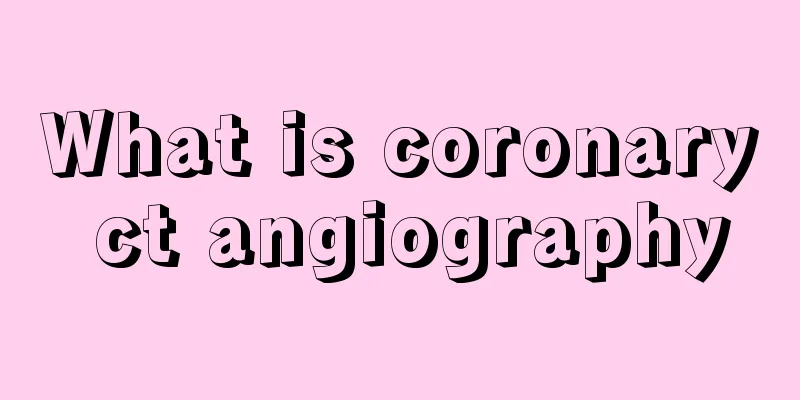Is surgery necessary for gallstones?

|
Gallstones do not necessarily require surgery, and treatment options depend on the size of the stones, the severity of symptoms, and the risk of complications. Asymptomatic gallstones usually do not require surgery and can be treated with dietary adjustments and regular observation; when symptoms or complications occur, medication, extracorporeal shock wave lithotripsy, or surgical removal of the gallbladder may be required. 1. Management of asymptomatic gallstones Patients with asymptomatic gallstones generally do not need immediate surgery, but they need regular checkups. In terms of diet, you should reduce the intake of high-fat, high-cholesterol foods, such as fried foods and animal offal, and increase fiber-rich foods, such as whole grains, vegetables and fruits. Moderate exercise can help promote bile excretion and reduce the risk of stone formation. Regular ultrasound examinations can monitor changes in stones and detect potential problems in a timely manner. 2. Choice of drug treatment For patients with mild symptoms, drug treatment may be effective. Commonly used drugs include ursodeoxycholic acid, which can dissolve cholesterol stones; anti-inflammatory and choleretic tablets help relieve gallbladder inflammation; and antispasmodics such as atropine can relieve biliary colic. Drug treatment should be carried out under the guidance of a doctor, and the effect should be evaluated regularly to avoid possible side effects caused by long-term use. 3. Non-surgical treatment Extracorporeal shock wave lithotripsy is suitable for single, small cholesterol stones. It uses high-energy shock waves to break up the stones and facilitate their removal. Percutaneous transhepatic choledocholithotomy is suitable for patients with stones located in the bile duct. It uses minimally invasive techniques to remove the stones. These methods are less invasive and have a quick recovery, but they are not suitable for all patients and need to be selected according to specific circumstances. 4. Necessity of surgical treatment When gallstones cause recurrent biliary colic, cholecystitis, or bile duct obstruction, surgical removal of the gallbladder is the preferred treatment option. Laparoscopic cholecystectomy is the most commonly used minimally invasive surgery, with the advantages of less trauma and faster recovery. Open surgery is suitable for complex cases or patients who have failed laparoscopic surgery. After surgery, you should pay attention to a light diet and avoid greasy food to promote physical recovery. The treatment plan for gallstones should be formulated according to the specific situation of the patient. Asymptomatic patients can be managed through diet and observation, while symptomatic patients need to combine medication, non-surgical or surgical treatment. No matter which method is chosen, it must be carried out under the guidance of a doctor and reviewed regularly to ensure the treatment effect and physical health. |
<<: Malignancy of gastrointestinal stromal tumor
>>: Vaginal bleeding after hysteroscopic abortion
Recommend
What kind of facial mask is suitable for acne-prone skin
There are many types of facial masks, and now fac...
What are the chemotherapy options for nasopharyngeal carcinoma?
Nasopharyngeal carcinoma is not unfamiliar to man...
What are some simple ways to make bread at home?
I believe that bread is a must-have food for brea...
Analysis of the causes of melanoma
Melanoma is a common skin tumor and a malignant d...
Examination methods for confirming colon cancer
Correct medication guidance for colon cancer pati...
Which is the best authoritative hospital for treating pancreatic cancer?
Pancreatic cancer is a cancer with a very high mo...
Diagnosis method of esophageal cancer
For patients with dysphagia, especially those ove...
What are the sequelae of breast cancer surgery
Many people have a wrong understanding of breast ...
What are the benefits of running for an hour every day?
There are many people who like to run, especially...
Introduction to the symptoms of four major brain cancers
Brain tumors may compress nerves in the brain, le...
What are the symptoms of lung cancer? Lung cancer can cause these physical discomforts
Lung cancer is a particularly common malignant lu...
Can diabetics eat barley bran biscuits?
Diabetes is a condition caused by excessive sugar...
Eating these 5 kinds of food after surgery is the best way to replenish your energy
After the operation, the body's vitality will...
How to make homemade seasonings
Seasonings are very common in our lives. We usual...
What are the symptoms after radiofrequency ablation surgery for liver cancer? Revealing the seriousness of liver cancer
Radiofrequency ablation is a relatively effective...









